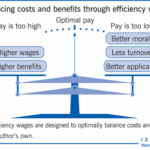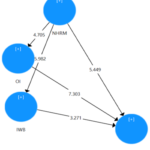Electronic Human Resource Management (eHRM) refers to the spatially separated, technically networked, and digitally supported, division-of-labor-based execution of HR tasks by at least two participants. This approach transforms traditional HR processes through the strategic use of information and communication technologies (ICT).
According to Lepak and Snell (1998), eHRM is also known by synonymous terms such as virtual HRM, web-based HRM, or business-to-employee (B2E).
Key Characteristics of eHRM:
-
Spatial Separation: Participants in eHRM—such as an applicant and a recruiter—do not need to be in the same location. While spatial separation is typical, it is not a strict requirement, as technological networking can also connect actors working within the same space.
-
Technical Networking: A mandatory feature of eHRM. Using IT infrastructures, participants can interact and collaborate regardless of geographic location, enabling global HR processes.
-
Technical Support: eHRM goes beyond simple communication tools (e.g., email). It involves partial or full automation of HR functions, such as applicant tracking or learning management, through specialized platforms.
-
Division of Labor: A core aspect of eHRM is the structured distribution of tasks among multiple actors, with workflows often predefined by the system architecture.
eHRM supports a range of strategic HR activities—including recruitment, training and development, and compensation management—allowing HR professionals to operate more efficiently and flexibly.
eHRM as a Functional Area of eBusiness
Similar to eCommerce or eProduction, eHRM is a functional sub-domain of eBusiness. It encompasses key HR sub-functions such as:
-
eRecruiting – facilitated by applicant management systems
-
eLearning – including modules like digital training and skills tracking
-
eAssessment – digital evaluation tools and psychometric testing (sub-function of eRecruiting or eLearning)
Through automation and digital integration, eHRM enables decentralized yet synchronized HR operations, enhancing responsiveness, data-driven decision-making, and strategic alignment within organizations.
« Back to Glossary Index





![15 Employee Offboarding Templates That Save Hours of HR Time [Free Downloads] 15 Employee Offboarding Templates That Save Hours of HR Time [Free Downloads]](https://i1.wp.com/www.hrcloud.com/hubfs/Header.png?w=150&resize=150,100&ssl=1)
